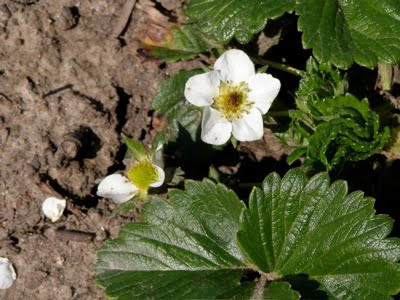
What doesn't Wayne do? It is a daunting task to report the day in the life of your farmer, Wayne James. There are those things he sets out to accomplish, then there are those things he gets pulled off to respond to in support of others, and there are all those things that MUST happen as this is a business. Not only a farmer, but also CEO of a small farm business, Wayne stays quite busy in the field, office, kitchen, farm stand, and busily moving about between all these places.
Notoriously donning bare feet under all circumstances and often accompanied by not just Willow, but now his new pup Oso, Wayne is easily recognizable around the farm and I do think most of you know him. Married to Evie and brother of Lee, employer of all us farm employees, he is a central figure that we all turn to as a leader and foundation of Tierra Vegetables.
Wayne is in charge of hiring, payroll, billing, taxes, sales/invoicing/accounting, farm data base management for both crops and customers. He makes packaging labels for products, develops spreadsheets for crop operations and facilitating sales. I think it is obvious he is the computer guy.
While this myriad of office tasks does keep him well tied to his office space that adjoins the commercial kitchen in Windsor, he does find time for the farm field and must do so as he and field manager, Pablo, cooperatively make seasonal decisions. Wayne walks the 17 acre field frequently to keep up with what is ready to harvest, till in and replant, what seeds has germinated with success or not, etc... Customers of the farm are constantly wanting to know "what is next" in the seasonal scheme of things. While a general guess can be made based on past seasons, each year is unique and only a regular survey of the farm will really tell you what is happening out there.

Luckily, Wayne does not have to do all of these field walks alone as he is in constant companionship with his newly acquired Shelty, Oso. Brother to Lee's new pup, Cloudy, these two joined the crew last fall when Lee and Wayne's parents had a large litter on miniature Shelty puppies....just what everyone had been waiting for. There are now three of them scattering the farm scene, in addition to Willow (making 4 farm dogs) who is really Evie's side kick. All of them love carrots very much, by the way.
Wayne starts his day in the office/kitchen usually, catching up on whatever is piling up on his desk or last minute packing of products for daily sales. Off to the field and farm stand he is involved in setting up for business, packing and organizing the CSA, planting the latest crops, whatever the day calls for. Wayne turns and makes compost, plans for the future of the farm and how to innovate and improve and increase production and sales, of course. When harvest season sets in, life gets pretty darn complicated with bulk quantities of dry corn, beans, and chiles for processing in the thresher or smoker and dehydrator. Wayne plays a central role in all of this delightful farm chaos.

While Lee is in charge of things like jam production and other kitchen activity, Wayne and Evie are ready to step in on these tasks at a moment's notice. These three are a team and while each has their focal point relating to individual strengths, they come together to celebrate and accomplish those activities that are crucial to the farm survival. In this case, the chile jam has been a very popular item for years and diverse annual production is important in serving customers and making good use of a wide array of chile types in a storage product. Wayne also helps make sauerkraut, mills the corn meal in periodic batches, and serves as kitchen assistant whenever duty might call him away from his desk. That is the unfortunate thing of having an office space adjacent to a busy commercial kitchen facility. Distractions emerge at a constant rate. Not only do they use the kitchen themselves, but also lease it out to a handful of other local producers in need of such a work space. This creates a little bit of kitchen and people management on top of everything else.
Needless to say, your farmer is working and living a busy, busy lifestyle to feed and serve the customer and community at large (I'm confident I forgot to mention many things Wayne does here). Take a minute to say thanks....as someone who observes from an intimate perspective I can tell you these guys deserve it.
 It looks like this could be the end of the strawberry raffle...we decided this does not count though. These berries were the very first and they took Wayne a good long while to collect, walking hundreds of feet up and down every single row of berries. The quality and quantities do not qualify as the first basket of true, good berries signifying the onset of a continuous strawberry harvest that our farm stand strawberry raffle boasts.
It looks like this could be the end of the strawberry raffle...we decided this does not count though. These berries were the very first and they took Wayne a good long while to collect, walking hundreds of feet up and down every single row of berries. The quality and quantities do not qualify as the first basket of true, good berries signifying the onset of a continuous strawberry harvest that our farm stand strawberry raffle boasts.








































